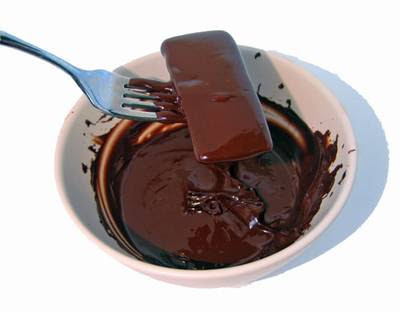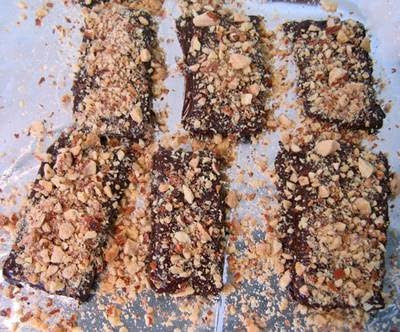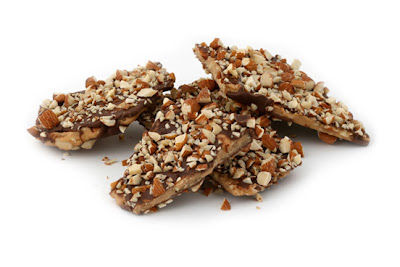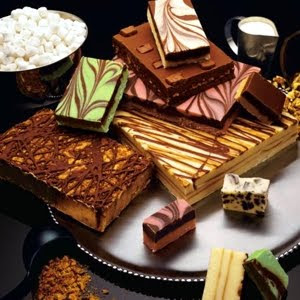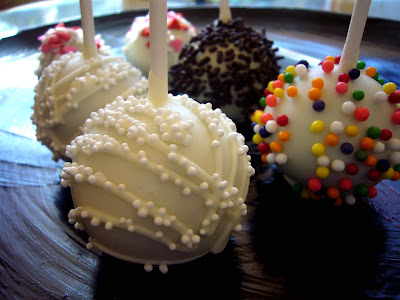White Chocolate
Friday, December 31, 2010
4:37 AM
,
0 Comments
ป้ายกำกับ: Article , Chocolate , Chocolate Article , Chocolate Cake Article , Chocolate Cake for Beginners , Chocolate Making , Easy Chocolate Cake , Easy Cooking , How To , Making Chocolate , Tutorials , White Chocolate
ป้ายกำกับ: Article , Chocolate , Chocolate Article , Chocolate Cake Article , Chocolate Cake for Beginners , Chocolate Making , Easy Chocolate Cake , Easy Cooking , How To , Making Chocolate , Tutorials , White Chocolate
Easy Chocolate Cake
White Chocolate
Easy Chocolate Cake
White Chocolate
White Chocolate is technically not Chocolate at all, since it does not contain Chocolate Liquor or Cocoa solids, the two primary ingredients in Chocolate. It does, however, contain cocoa butter, which is a product of the Cacao plant, and it has a delicate Flavor in which hints of Chocolate certainly play a role. It is processed and made much like Chocolate, and White Chocolate can also be used just as regular Chocolate is in an assortment of foods.
To Make Chocolate, the seeds of the cacao plant are harvested and allowed to ferment slightly. The outer casing of the seeds is cracked, revealing an inner core which is ground into Chocolate Liquor. This substance is the base of most Chocolates, but it can also be separated to yield cocoa solids and cocoa butter. Cocoa butter is the fat of the Chocolate, and it is rich, creamy, and very stable when processed well. Cocoa solids are mixed in with more Chocolate Liquor for intense Chocolates, or sold separately. Cocoa butter can be processed to make a variety of products, including cosmetic creams.
When White Chocolate is made, the separated cocoa butter is mixed with milk and a sweetener. White Chocolate is also frequently flavored with Vanilla. The mixture is poured into molds which take a variety of forms from Chocolate Bars to baking blocks, and packaged for sale after it solidifies and cools. The resulting white chocolate has an ivory color and a creamy flavor. It is also a very fragile Chocolate, and needs to be handled with care in baking.
Several nations have established labeling standards for White Chocolate, to ensure that it contains cocoa butter, rather than vegetable oil or another fat. As a general rule, White Chocolate must contain 20% cocoa butter. High quality White Chocolate made with good ingredients will have a cream to ivory color, whereas White Chocolate made with substitute fats will be truly white. This type of White Chocolate has an inferior flavor and texture, and most consumers and confectioners avoid it.
The delicate flavor of White Chocolate can be used in a number of desserts, or blended with conventional Chocolate for a contrast. It can also be used in savory dishes, especially spicy foods, which interact delightfully with the sweet, creamy flavor. White Chocolate is also available in plain bars which can be enjoyed plain, although it tends to be very rich, so it should not be consumed in large amounts.
To Make Chocolate, the seeds of the cacao plant are harvested and allowed to ferment slightly. The outer casing of the seeds is cracked, revealing an inner core which is ground into Chocolate Liquor. This substance is the base of most Chocolates, but it can also be separated to yield cocoa solids and cocoa butter. Cocoa butter is the fat of the Chocolate, and it is rich, creamy, and very stable when processed well. Cocoa solids are mixed in with more Chocolate Liquor for intense Chocolates, or sold separately. Cocoa butter can be processed to make a variety of products, including cosmetic creams.
When White Chocolate is made, the separated cocoa butter is mixed with milk and a sweetener. White Chocolate is also frequently flavored with Vanilla. The mixture is poured into molds which take a variety of forms from Chocolate Bars to baking blocks, and packaged for sale after it solidifies and cools. The resulting white chocolate has an ivory color and a creamy flavor. It is also a very fragile Chocolate, and needs to be handled with care in baking.
Several nations have established labeling standards for White Chocolate, to ensure that it contains cocoa butter, rather than vegetable oil or another fat. As a general rule, White Chocolate must contain 20% cocoa butter. High quality White Chocolate made with good ingredients will have a cream to ivory color, whereas White Chocolate made with substitute fats will be truly white. This type of White Chocolate has an inferior flavor and texture, and most consumers and confectioners avoid it.
The delicate flavor of White Chocolate can be used in a number of desserts, or blended with conventional Chocolate for a contrast. It can also be used in savory dishes, especially spicy foods, which interact delightfully with the sweet, creamy flavor. White Chocolate is also available in plain bars which can be enjoyed plain, although it tends to be very rich, so it should not be consumed in large amounts.
Related : Easy Chocolate Cake Recipe
Related : White Chocolate By Wisegeek Guide ~ White Chocolate, Easy Chocolate Cake
















































